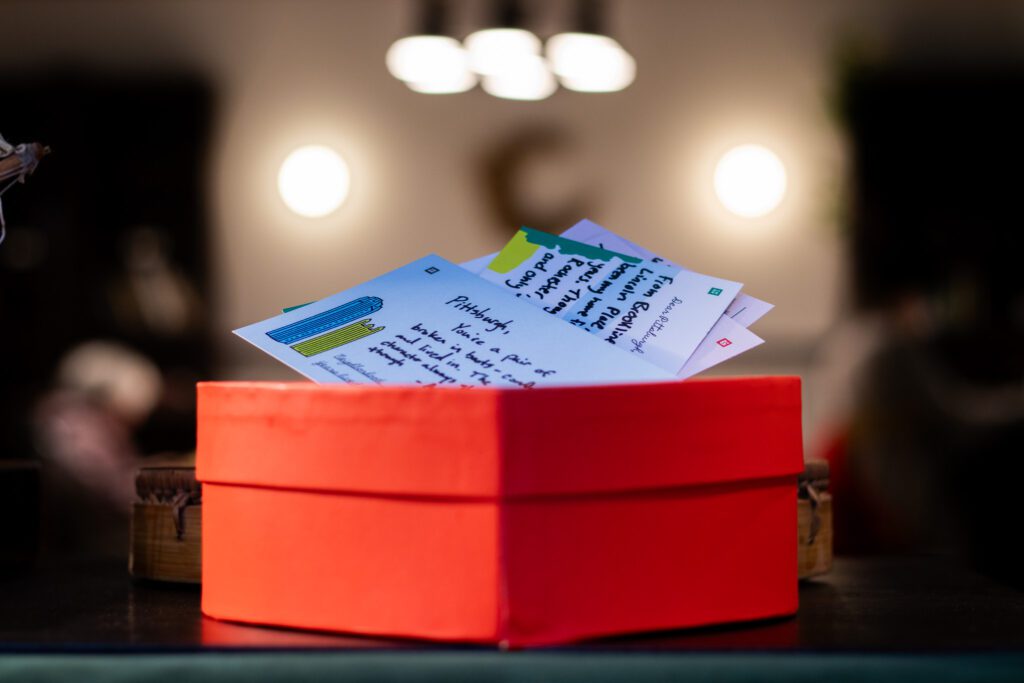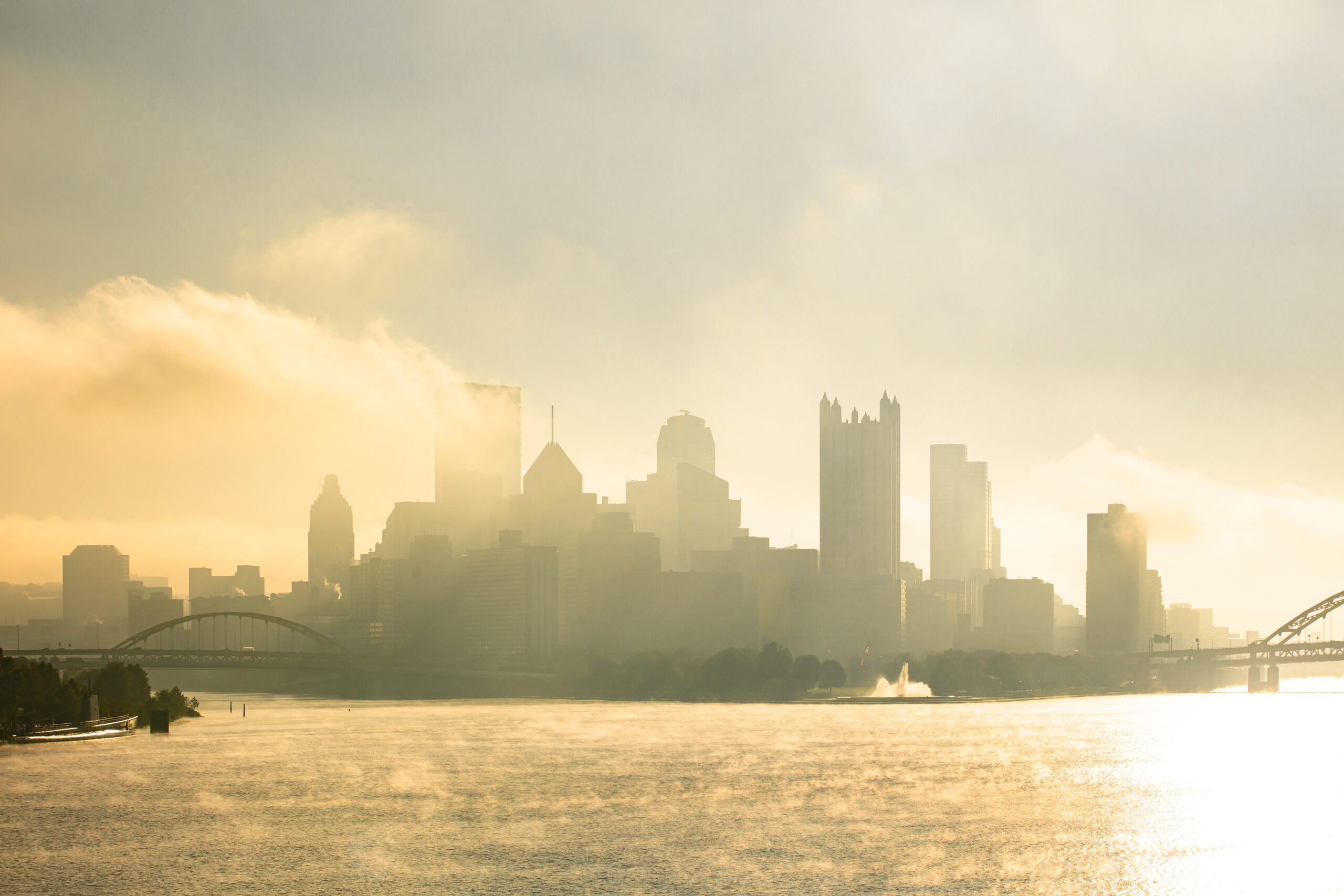Since the industrial collapse of the 1980s, Pittsburgh’s identity has been somewhat shrouded in mystery. We’ve tried different ones on for size, and watched as they came to life as taglines and headlines and merchandise flying in the winds of the Strip District sidewalk displays. But nothing has quite stuck. Our past held moments of strong shared identity, but our present feels fragmented and our future uncertain.
Who We Say We Are
In February, we asked Pittsburgh residents what they love about their city. The responses were varied, but common themes emerged:
- A tight-knit social fabric and sense of community
- Legendary institutions and a culture of innovation
- People who embody grit, perseverance, craftsmanship, and creativity
- One-of-a-kind topography and exploring nature in our backyard
- Places imbued with meaning: historic homes, beloved small businesses, a favorite reading chair in a library, farmer’s markets in the park, storied halls of art and culture

Collectively, these letters created a portrait of Pittsburgh as a safe harbor or a blank canvas: a place where people can invent, explore, learn, create, fall in love, start a business, start a family. For Pittsburghers, our city represents a place of unexpected opportunity and limitless possibility; a city where, with a little hard work and creativity, you can invent the life of your dreams.
Who They Say We Are
But when it comes to the outsider’s idea of Pittsburgh, we’ve seen and heard many perceptions that feel flat, outdated, or uncertain. So in March, we took to the streets of Austin during SXSW to confirm a hypothesis: who we say we are may be fundamentally at odds with who they say we are.
We interviewed dozens of people from all over the world, asking them, “What comes to mind when you think about Pittsburgh?” The responses were often slow to emerge, painful even. Many people declined to be interviewed, frequently repeating the same excuse: “I know nothing about Pittsburgh.”
Of the responses we got, the common themes were:
- Sports
- Bad or cold weather
- Industrial
- Beer
- Philadelphia
And we didn’t just speak to strangers on the street; we had in-depth conversations and interviews with thought leaders from the festival and from the city of Austin. Many asked us what’s happening here, reinforcing that sense of the unknown. Pittsburgh ex-pats expressed nostalgic love for the city, but often sheepishly admitted they would not move back. A leading executive asked if he should call us “yinzers” or not.
Who We Could Be
All of this is not to say we shouldn’t be proud of our sports teams, amazing craft breweries, or our industrial legacy. It is to say that Pittsburgh, as an idea, is a big question mark in the minds of many – including, perhaps, ourselves.
If you think about other cities – New York City, San Francisco, Los Angeles, Austin, Denver, Nashville, Paris, Oslo, Tokyo, Dubai, Rio – you don’t define them by sports brands, or the goods they produce, or other nearby cities. You have an immediate feeling of who they are, as a place and as people. That’s how place identity is created; it emerges from a shared consciousness.
When it comes to Pittsburgh, the scales are tipped too far towards history and past experience. Identity isn’t just about memory; it’s also influenced by dreams, expectations, beliefs, values, innate features, and many more factors. It’s the story of self, unfolding with time and outside of time.
This Google Arts and Culture exploration of Pittsburgh’s identity, created in collaboration with many of our great institutions, comes the closest I’ve seen to capturing our essence. As depicted here, and in our estimation, Pittsburgh’s identity is sitting somewhere at the intersection of opportunity, grit, creativity, and innovation.
One thing’s for sure – it’s certainly deeper than sports and weather.

